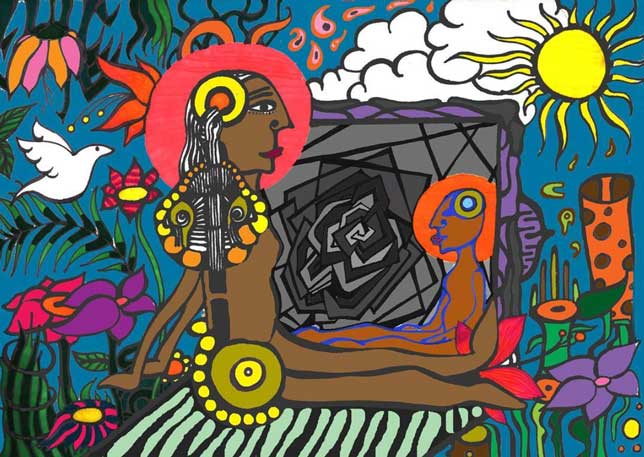Disha Duggal’s art was borne out of resistance like most great art is. Her art was a personal fight against the Indian schooling system that tried to suppress her from having an individual voice. She says she was taught that “your worth as an artist is solely dependent on how well you can recreate a still life or a landscape. But, funnily enough, it was the broken education system that led me to art eventually”. Her passion for art was discovered after endless hours of doodling to cope with tedious lectures during her undergraduate degree in Business. What began as a form of escapism triggered her evolution into the artist she is today.
Often, an artist’s surroundings are imprinted into their work. Her love-hate relationship with the city- Mumbai, she has spent her life in, is one that is particularly intriguing. “Although many creative people are inspired by the places they live in, what shaped me was in fact that I didn’t like living here. It’s only now, years later, that I’m slowly resisting it less and beginning to appreciate it”. This resonates in her art as we see the transcendence of real-life chaos into alluring elements on the canvas. Another element that makes Duggal’s work stand out is her fusion of abstract elements with simple motifs. One such painting of hers reads “Life is more convenient. Are we any happier?”, the painting depicts the kind of chaos that takes place when modernity and convenience become entangled. This is deep-rooted in her ideology of how her existence is the primary influence for the art she creates and “her desire to decode it through art”.
When Duggal is not busy unpacking the larger questions that fuel her endless curiosity, she spends her time away from her canvas on dancefloors with breathing space and kissing animals on the nose. One of her dreams is to help dismantle the archaic education system that suppresses children in their formative years from having a creative side. Most children suffer through the education system without understanding the importance of creativity and focusing on more than the academic subjects. As a result of which many children don’t express themselves in artistic ways as they feel it won’t be given importance. “We need to create an environment where artists get the kind of sensitivity, compassion, and nurture they need to blossom”.
Duggal’s motive behind her art is to open a portal within the viewer that allows them to understand the relationship they have with themselves, technology, and nature. She views herself as an amalgamation of curiosity, playfulness, and vulnerability, which reflects in the authentic relatability of her work. Her art creates a parallel dimension where “abstraction is beauty and colors, and shapes go beyond intellectual understanding”. The broader message being, when you stand in front of a piece of art, it consumes you. It allows you to explore beautiful tangents that your mind may not go on a daily basis. The prominence of her pieces isn’t rooted in understanding but in feeling. As the bard once said to be or not to be, that is the question; in Duggal’s case to feel or not to feel, that is the expression.
Text and Curation by Anithya Balachandran.
Artworks by Disha Duggal.










Fantastic work!
Disha, this is great ! ..I had no idea about your work..